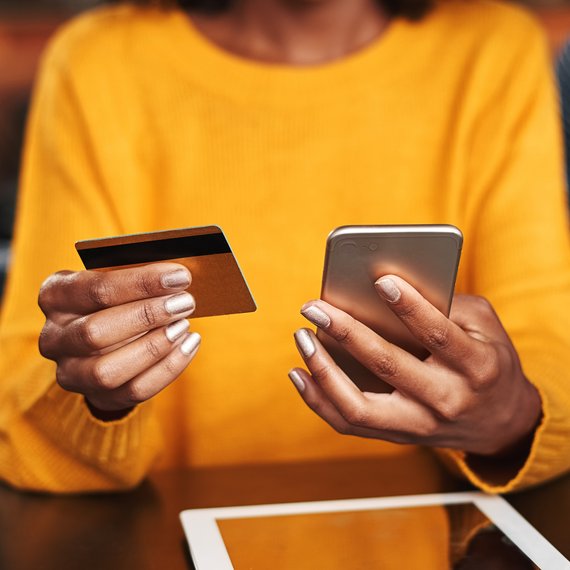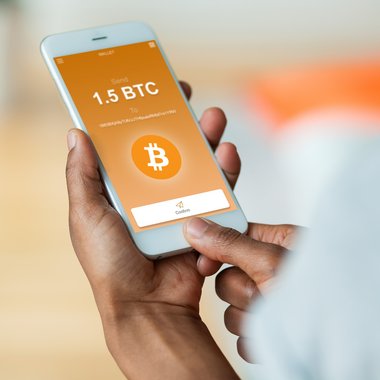
- 5 minutes read
Going cardless
As mobile wallets and other payment alternatives continue to gain mainstream momentum, innovators will surely be motivated to pick up on these threads and make further improvements.
Forgetting your wallet at home isn’t such a big deal anymore. You can use an app-based taxi service to get to and from work. You can order lunch on your favourite food delivery app. And, if you’re really in a pinch, a growing number of ATMs accept cash withdrawals from your phone.
The United Nations Conference on Trade and Development expects mobile wallets to overtake cards as the most popular payment method by 2019. These findings are also supported by our own research, in which 79% of respondents across the US, UK and Canada said they found mobile wallets more convenient than other payment methods, including contactless card payments.
From performer to behind-the-scenes operator
Mobile payments are often described as “cardless”. But, when you think about it, this isn’t entirely accurate.
To use a mobile wallet, you have to upload a card and authenticate it. So, while you may not be taking it out every time you pay for something, your ability to make a “cardless” payment ultimately depends on whether you own a card in the first place.
Physical cards have evolved considerably since Barclays released the first one 51 years ago. The magstripe has given way to more secure chip-and-pin technology. And contactless has revolutionised the way we pay. That said, cards are still a relatively old and imperfect technology. One that can be misplaced, stolen, cloned and more.
So why are we still so reliant on them? And, more to the point, will mobile wallets ever be able to break free and become truly cardless?
Incremental improvement
Today’s payments landscape is the result of a long evolution.
The earliest civilisations paid for goods and services by bartering. This allowed individuals to swap something valuable they had in exchange for something else they needed.
But bartering depended on a double coincidence of wants — both parties to the transaction had to own something they were able to dispose of and which the other party wanted. As societies grew in size and complexity, this became increasingly difficult. So, bartering was replaced by money, which made the double coincidence of wants unnecessary.
Similarly, once people started traveling more often and for longer distances, cheques became more convenient than money, which was usually minted from gold and other precious metals and could weigh in excess of 11 ounces — heavy to carry around and begging for unwanted attention.
Fast forward to the 2000s, and the same can be said for mobile wallets.
In 2011, when Google announced the Google Wallet — Android Pay’s predecessor and mobile payments trailblazer — it didn’t position it as a new and innovative payment method, but as an improvement over the status quo. The primary aim was to provide customers with a safer, simpler and more convenient way to store and use their cards, not to replace them. Or, as their announcement put it: “Our goal is to make it possible for you to add all of your payment cards to Google Wallet, so you can say goodbye to even the biggest of traditional wallets.”
Even Apple opted for an uncharacteristically low-key approach, emphasising Apple Pay’s ease of use and security rather than heralding it as a game-changer. The potential for revolution came later.
Wanted: the next generation of mobile payment security
This thinking also comes through in the way mobile wallet security works.
Mobile wallets link to and communicate with your bank account securely using your physical card, which is encrypted through a process called tokenization. You also have to authorise every individual transaction using a PIN, biometric data or some other method such as a unique lock screen combination. However, the physical card is the cornerstone of the technology.
As things stand, mobile wallets are so secure because the mechanism creates a triple whammy — something you have (your phone), something you know (tokenized card details) and something you are (the PIN, biometric data or lock screen combination). For the card to disappear from the equation, we must come up with an alternative but equally effective way in which consumers’ financial details can be obtained, authenticated and stored securely.
The future of truly cardless payments is a slow burn
There’s already some movement in this area. For instance, Visa recently launched a virtual tokenized card that works as a digital copy of your physical one. This eliminates the need to scan and upload your plastic.
On the biometrics front, Brazilian bank Banco Bradesco has pioneered cardless ATMs that work by reading the unique vein pattern in users’ palms. And, in China, you can now pay for your original recipe KFC chicken by simply smiling at a 3D camera.
But as promising as these new technologies sound, they’re still largely pilot projects being tested in limited markets. And, more importantly, there are other issues that need sorting out before they’re ready for a wider audience. For instance, while you can replace a lost or stolen card quite easily, what happens if someone manages to steal your retina scans?
As mobile wallets and other payment alternatives continue to gain mainstream momentum, innovators will surely be motivated to pick up on these threads and make further improvements. This will take some time at first, because new technology will need to find a way to merge convenience with better security.
That said, once the tipping point finally arrives, it’ll be a big bang moment that’ll unlock all sorts of previously unthinkable possibilities for the payments industry.




